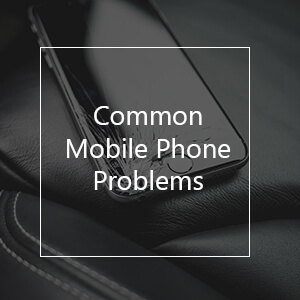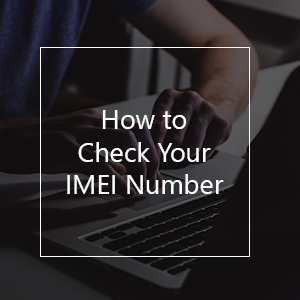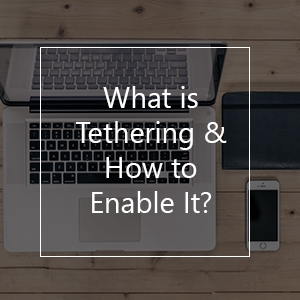CDMA vs GSM – What Is The Difference?
Once you read those abbreviations you start thinking a lot of things that may be true. But we are sure there are many details that you do not know yet about CDMA technology and GSM technology.
Here we will give you all the information you need to know to understand the differences between CDMA & GSM! Each one of these technologies has different pros and cons that make CDMA better than GSM or vice versa. Now let’s start talking about the main details of these two technologies.
CDMA vs GSM Explained
What is CDMA?
CDMA (Code-division Multiple Access) is a digital radio system that supports a mobile phone network. The system was developed by the Allied from World War II. CDMA gives users total access to the network spectrum. This allows more users to connect to the network at the same time. It securely encrypts the individual conversation of each user through a random digital sequence. Therefore, the voice call data is kept protected in a way that just those who participate in the call can receive the data.
In the past, mobile phones with CDMA network capability did not use SIM cards. Each device is designed specifically to work for a specific network provider only. It means that the cell phones are linked to an operator and its network. Now, it changed because network provider operating on CDMA started to use SIM cards for their LTE coverage. If you decide to change the provider you can either buy a new mobile phone or ask to get your phone unlocked at your current provider.
What is GSM?
GSM (Global System for Mobile Communication) is a time-division technology that breaks the transmission signal into separate time slots for each device (CDMA is code-division meaning that the users are separated by a specific digital code.). GSM was first created in Europe by the Telecommunications Standards Institute during the early ’80s. This European Institute formed a group called Groupe Speciale Mobile (also abbreviated as GSM) to create a digital mobile communication system. The main purpose was to develop a better network for the whole European continent with a more effective technical solution for wireless communication.
With the first introduction of the SIM cards in the ’90s, GSM phones have been characterized by having a SIM card that allows users to switch their phone number and personal information to any other unlocked GSM phone. As we already explained before, this is not possible with CDMA phones.
Although GSM technology is the most common technology around the world, the US is still working with both CDMA network and GSM network. However, 2G GSM is going extinct in the country due to the arrival of the 5G network, which is the fifth (and latest) generation of cellular mobile communications. Talking about cellular frequency bands, many GSM mobile phones support three frequency bands (900/1,800/1,900 MHz or 850/1,800/1,900 MHz) or four bands (850/900/1,800/1,900 MHz).
Cell phones that support three bands are usually called tri-band phones, while other ones are commonly known as quad-band phones or world phones because you can make international trips and use the same smartphone.
Lists of CDMA and GSM Carriers (USA)
As we already mentioned in the previous part, most of the world uses GSM networks. But there are places where CDMA networks still exist. Do you know if you are part of a CDMA carrier or a GSM carrier?
By now, you probably have an idea already and you can conclude what type of network you belong to. Below, you will find a list of GSM & CDMA carriers in the USA for you to double-check:
-
GSM Carriers in the US
- AT&T
- Broadpoint
- DTC Wireless
- Indigo Wireless
- T-Mobile
Find a list of all GSM carriers here.
-
CDMA Carriers in the US
- Verizon
- Sprint
- U.S. Cellular
- Cricket
Find a list of all CDMA carriers here.
Talking about frequency bands, AT & T uses 1900 MHz, 850 MHz, while T Mobile uses 1900 MHz, 1700/2100 MHz. On the other hand, Verizon and Sprint use the same frequency band which is 800 MHz, 1900 MHz.
The Evolution of Mobile Communication Technologies
What is 4G?
4G is the fourth generation of broadband cellular network technology and it evolved from 3G, which is the technology that was present in almost all mobile phones until now. Although 4G and LTE are not exactly the same, LTE is commonly marketed as 4G LTE. One of the main aspects of 4G is that you can reach a speed that is almost 10 times faster than 3G.
All the telecommunication companies currently count with a 4G connection even though its different coverage packages. With 4G, your mobile phone or any other device can browse the internet at a speed close to optical fiber. 4G has a lot of advantages and you will realize why users and telecommunication companies call it LTE.
Advantages of 4G
- While 3G connection can only reach 10Mb/s, with 4G users can browse on the internet at a 100Mb/s speed. So watching a video, downloading apps or just browsing on a website is faster. Some research says that 4G might reach up to 1 GB/s speed connection.
- It works better in real time. The delay in the connection is at least 70% minor than the 3G. You will never notice pauses in voice calls or in online games.
- Just a few users know that 4G will drop the network congestion so the data will move faster (from the client to the server and back) making our connection more stable. In this way, a lot of users can be connected at the same time in the same zone.
Disadvantages of 4G
- You can only use 4G if your cell phone is compatible with this technology.
- There are some areas where 4G is still not available nowadays.
- Despite that 4G has an excellent speed connection; it does not exceed the optical fiber. However, it is still the best way to browse on the internet using your mobile phone.
- No matter how fast 4G mobile internet is, it still has a data limit in most cases. Users can consume contents faster but not a greater amount.
What is LTE?
LTE (Long-Term Evolution) is a standard for wireless broadband communication for cell phones,data terminals and other devices , based on the GSM/EDGE and UMTS/HSPA technologies. 4G encompasses several types of connections, between them LTE. There is one conventional technology known as LTE Advanced, and it reaches up to 3GB/s. Unfortunately, there are just a few mobile phones that are compatible. You can find them in Russia or South Korea. Germany was one of the first countries that had LTE technology.
German telecommunications companies do not sell it as 4G, it is simply called LTE. Beyond this name, just having a mobile phone that can reach a high-speed connection almost comparable with an optical fiber is the best way of using the mobile internet nowadays. The only thing that you have to make sure is to have a compatible cell phone and live in a city with good coverage. It is important to mention that iPhones newer than the 5 and almost all Androids newer than the Samsung Galaxy S5 will be compatible with all major carriers’ 4G LTE bands.
What is 5G?
The 5th generation of mobile technology is on its way and believed to be finally rolled out in 2020. Some users get to know 5G already as the U.S. carriers launched their service in some cities. For example, Verizon’s network in Chicago and Minneapolis, also some parts of Atlanta, Denver, Detroit, Indianapolis, Phoenix, Providence, Rhode Island, St. Paul, Minnesota, and Washington, DC. The provider Sprint introduced 5G in parts of Atlanta, Chicago, Dallas-Fort Worth, Houston, and Kansas City. This next generation of mobile broadband will beat the latest 4G. Also, it possibly retires the 3G.
5G will not only provide a better data speed. It will play a significant role in the technology industries through the use of connected devices. From human’s interest in gaming to the AR/VR technology, a vital step in driverless cars and medical robots for the healthcare system. That’s what we call ‘The Internet Of Things (IoT)’.
What Is The Internet Of Things (IoT)?
It is the use of connected devices. From human’s interest in gaming to the AR/VR technology, a vital step in driverless cars and medical robots for the healthcare system.
What are the difference of GSM vs CDMA?
From the beginning of the cell phone technologies, it is that the use of SIM cards is distinguishably the key difference between GSM and CDMA. Under GSM, users can remove a SIM card then put it in the new phone. At the same time, users have to follow the terms and conditions of their CDMA carriers if they wish to switch phones.
The Use of SIM Cards
The use of SIM cards is the key difference between GSM and CDMA. Under GSM, users can remove a SIM card then put it in the new phone. On the other hand, CDMA users have to follow the terms and conditions and call their CDMA carriers if they wish to switch phones.
The Quality of the Call
The call quality of both nationwide networks heavily depends on the network coverage. GSM users can experience better voice quality than CDMA users or vice versa in particular areas. Furthermore, the GSM network can transmit voice and data simultaneously. On the other hand, not all CDMA phones can transmit voice and data at the same time. In addition to the network congestion, CDMA call quality tends to be better than GSM.
Network Coverage
GSM uses ore dedicated network towers plus it enables worldwide roaming. In contrary, CDMA network towers are more widespread, has a higher coverage but only limited roaming options. Nowadays, GSM is used by majority of users around the world, yet half of the population in America, Canada and Japan still use CDMA.







